This is one of those “don’t do what we did” blog posts.
We traveled from Douglas, Wyoming to Steamboat Springs, Colorado. Diesel fuel in Colorado is about 50 cents a gallon cheaper than in Wyoming. So it made sense to get fuel in Colorado, especially since we have large fuel tanks. We like the Pilot-Flying J Truck Stops because we have their charge card and get 8 cents per gallon off the cash price. Jim did his usual research and there was a Pilot in Steamboat Springs. Done deal…we’ll get fuel there.
Somewhere along the trip I asked Jim how we were doing on fuel (it’s his job to keep track). His reply…”We should have about 20 gallons left when we arrive (which is our usual fill point).” WHAT? To me, that sounded like we were pushing it a little too close. To appease me, Jim pulled over and physically checked how much fuel was in each saddle tank. (Explanation: we have two fuel tanks, called saddle tanks. They are physically located under each door into the cab of the RV). Calculating the amount of fuel remaining and the actual mileage there was enough for the trip and a 20 gallon reserve.
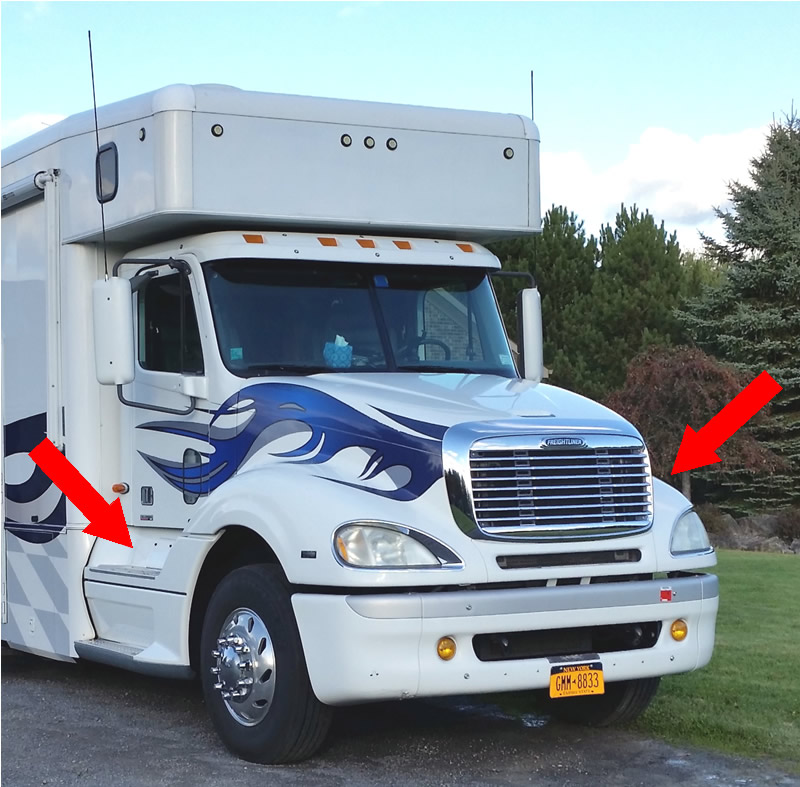
The red arrows show the location of the left and right saddle tanks. They run parallel to the length of the RV.
Let me also add that we know the fuel gauge on the RV is not accurate at all. We have a tablet that interfaces with the truck diagnostics that tells Jim real time information about the state of our engine. That program said we would have enough fuel.
So, we cruised through the last small town before going over the mountain range into Steamboat Springs. There were a couple of gas stations in that little town but we could not stop since we were too tall to fit under the station canopy.
You probably know what is coming. About twenty miles out of that little town, we were going down a long very steep incline and suddenly sputter, sputter, sputter, cough, cough…and silence. Yes, the truck died. While coasting, Jim spotted a really rough pull off on the side of the road and muscled us into it. When I say rough, I mean the whole RV lurched from side to side due to the potholes in the pull out. Cupboard doors flew open from the lurching. A couple of bins in a cupboard over the microwave flew out and dumped their contents on the floor. Fortunately, we put hair ties on all the cupboard doors that we can…that is the only thing that saved the dishes…they tried to escape.
Going down the very steep hill sloshed the fuel to the front end of the fuel tanks and caused the fuel system to start sucking in air because the fuel inlet is in center of the tank. Yes, the hill was so steep that when the fuel moved to the front of the tanks it didn’t even come back as far as the center of the tank. Yes, we were dead. We were NOT happy campers.
We have run out of fuel once before (That time it was a bit of a mystery, all the fuel was in one tank and none in the other so the engine sucked in air, the tanks are suppose to stay even due to the way the fuel system is designed. We are still trying to figure out what happened.). Starting a semi truck that has run out of fuel is NOT as easy as starting a car that ran out of gas. We tried to get ourselves back up and running the last time we run out. That time, it took a mobile truck service bringing us fuel and starter fluid to get us going.
So, here there we were, in the Rocky Mountains, on the side of the road, with 1 bar of signal on my Verizon phone and no bars on Jim’s AT&T phone. This meant we had no smart phone data and couldn’t look up mobile truck services. We had a few local phone numbers (campgrounds, gas stations) from some paper literature. So we started calling them to see if we could find a mobile truck service. Alas, no luck. What were we to do???
At this point, my brain kicked in and I pulled out our Verizon cellular hot spot and it’s external antenna. I started that up and BAM…we had 1 bar of 4G signal. We pulled out the laptops and started googling what we could find in the area. And what did we find? Nothing. We were going to have to get ourselves out of this predicament.
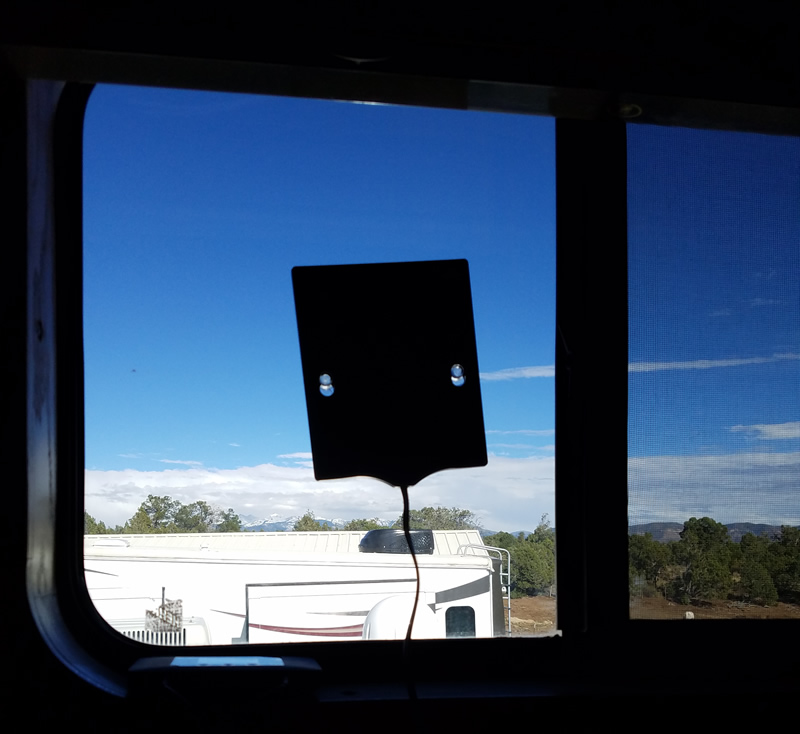
The antenna sticks to a window with suction cups. This antenna is magic! It pulls in cell signals that you didn’t know were out there!
We unhooked the Jeep and Jim set off for Steamboat Springs (a 36 mile drive through the mountains) to buy fuel cans, diesel fuel, and a can of aerosol starting fluid. I stayed behind in case an authority stopped. I ate lunch, watched the news that I had recorded that morning, and basically chilled, grateful that it was a sunny day and our solar panels were doing their thing.
Two hours later, Jim returned. He had paid attention the last time we ran out of fuel, so he knew pretty much what to do. We put five gallons of diesel fuel in each saddle tank. We put more diesel fuel into the fuel filter (knowing it had been sucked dry). As the final step, Jim opened the air cleaner and while he sprayed engine starter fluid into the air cleaner (basically ether), I cranked the engine over and pumped the gas pedal. It took a few tries, but the Blue Flame finally fired up. Thank goodness.
So, we now have a new rule. NEVER LET THE FUEL DROP BELOW 40 GALLONS (at least not in the mountains). Also, we need to remember if we had run the generator on that tank of fuel (we HAD for an hour while at Devil’s Tower). Plus, we have to keep in mind that traveling on non-level roads will definitely affect the fuel system.
We made the final 36 mile trip into Steamboat Springs and immediately drove to the Pilot Station and filled up the RV and the Jeep (which was also almost empty). The crisis was over.
This is an experience we don’t intend to repeat. But it is nice to know that if we run out of fuel, we have the knowledge and experience to get ourselves out of trouble.
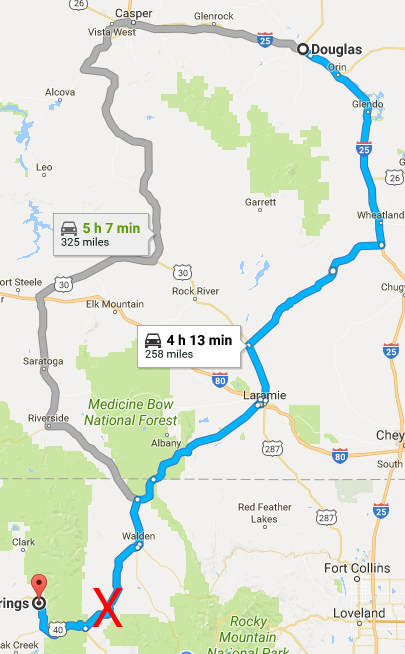
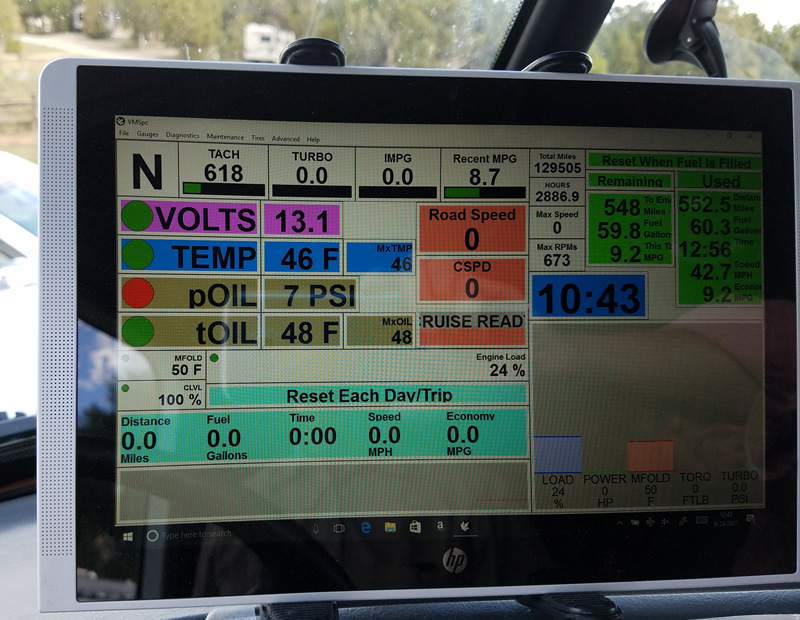
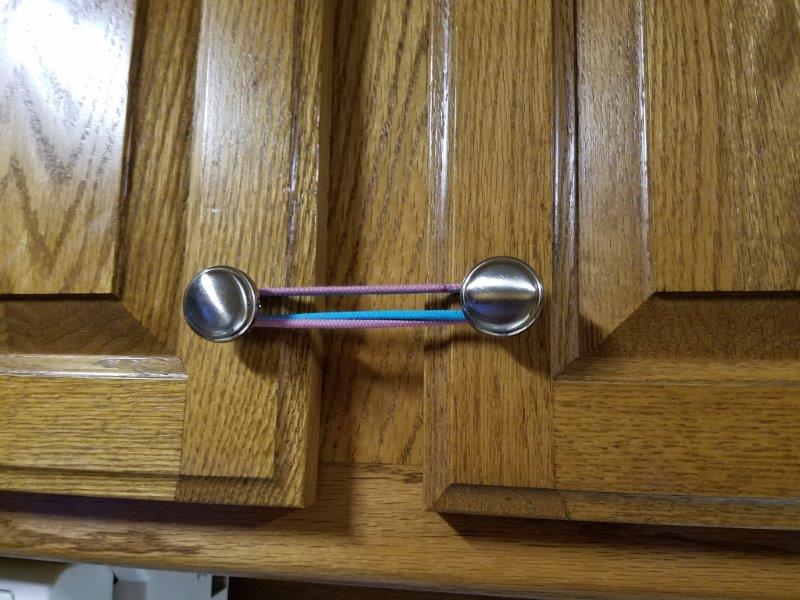
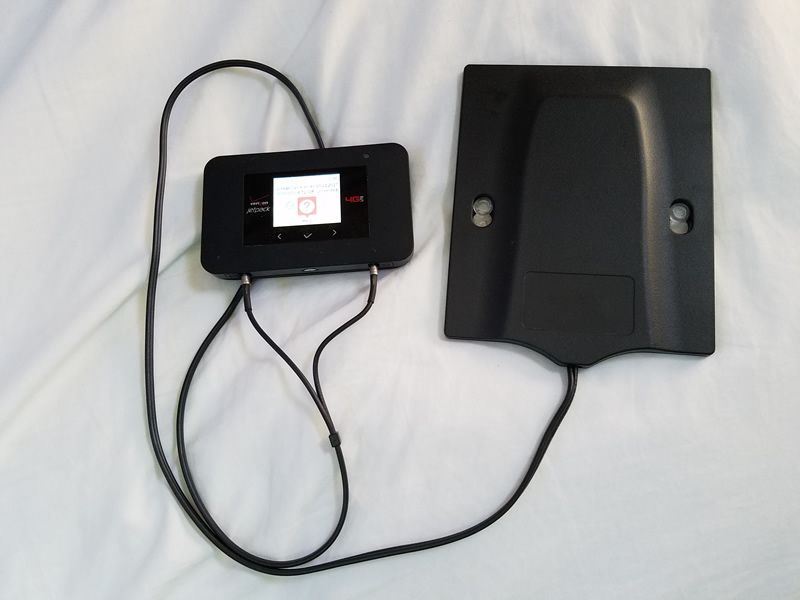
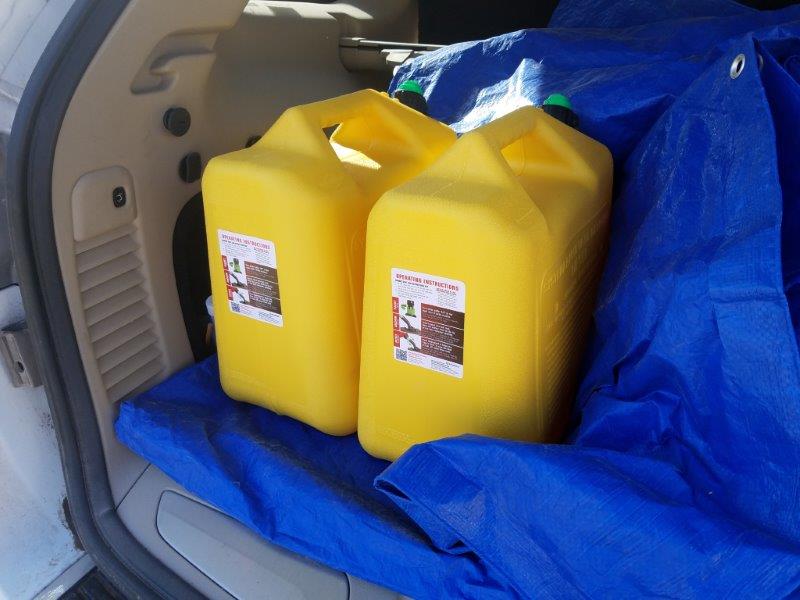
You handled this very nicely!!!!
I don’t think I would have agreed with that at the time!